The wedding convoy makes its exuberant way down the street, car horns blaring, cheering men and boys hanging out the windows as they pull up outside a wedding hall on the banks of the Tigris River.
Groom Mohammed Tahir leaps from a car festooned with balloons, while his beautiful,
overwhelmed bride Ilham Bashar is helped out by women in sparkling abayas and colourful headscarves, singing and clapping their hands.
It is Monday afternoon in Mosul, northern Iraq, and this scene of joyous celebration was illegal under the vile and oppressive hand of Islamic State, the Islamist group which controlled this city until July 2017.
Across the river from the wedding hall, the Old City and west Mosul still lie in ruins, destroyed either by the bombs of Islamic State, or the air strikes which pounded the city for nine months when the international Coalition was driving the group out.
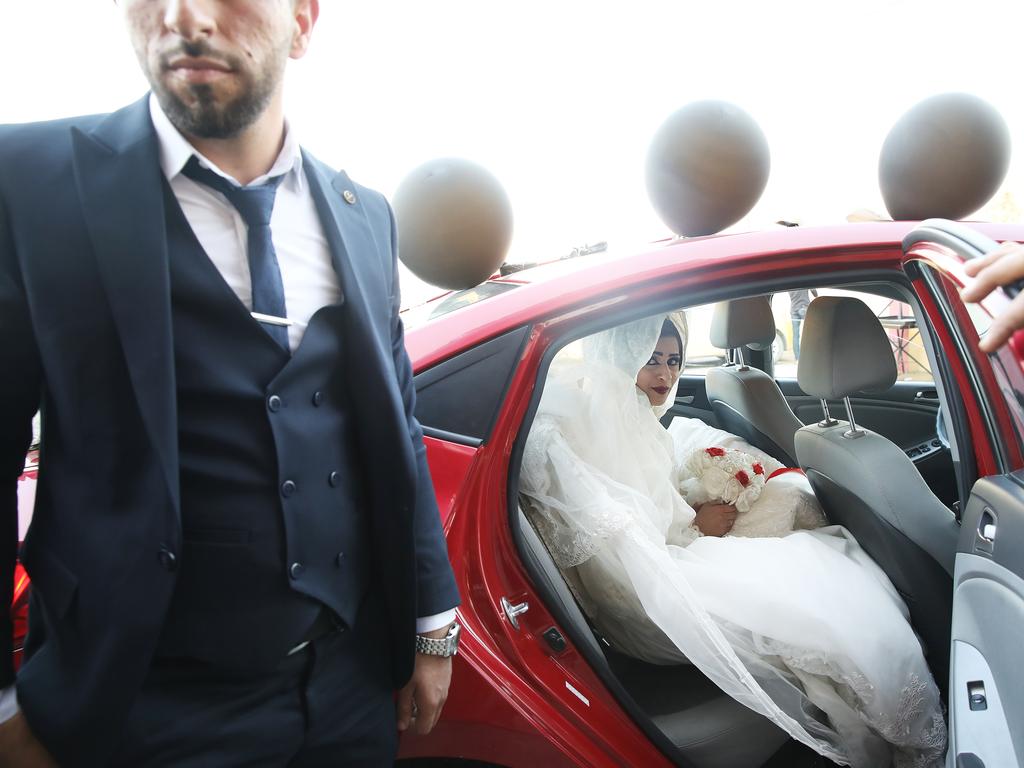
Bodies and improved explosive devices are no longer being found in the rubble. But entire districts are obliterated, businesses destroyed, and hundreds of thousands of people are homeless. The historic al-Nuri Mosque, where Islamic State’s leader Abu Bakr al-Baghdadi stood to declare the caliphate across Iraq and Syria, has been reduced to a pile of stones, blown up by Islamic State in their final stand. Police and heavily-armed soldiers patrol the streets. Every wall which still stands is pockmarked with bullet holes and shrapnel.
But 20 months after Islamic State was finally driven out, Mosul, a restive city of four million people, is coming back to life.
News Corp witnessed four weddings take place on a single, sunny afternoon in March. It would have been unthinkable under Islamic State, who banned anything but austere, official weddings protocols.
COMPANION STORY: Middle East comes to grips with life after ISIS

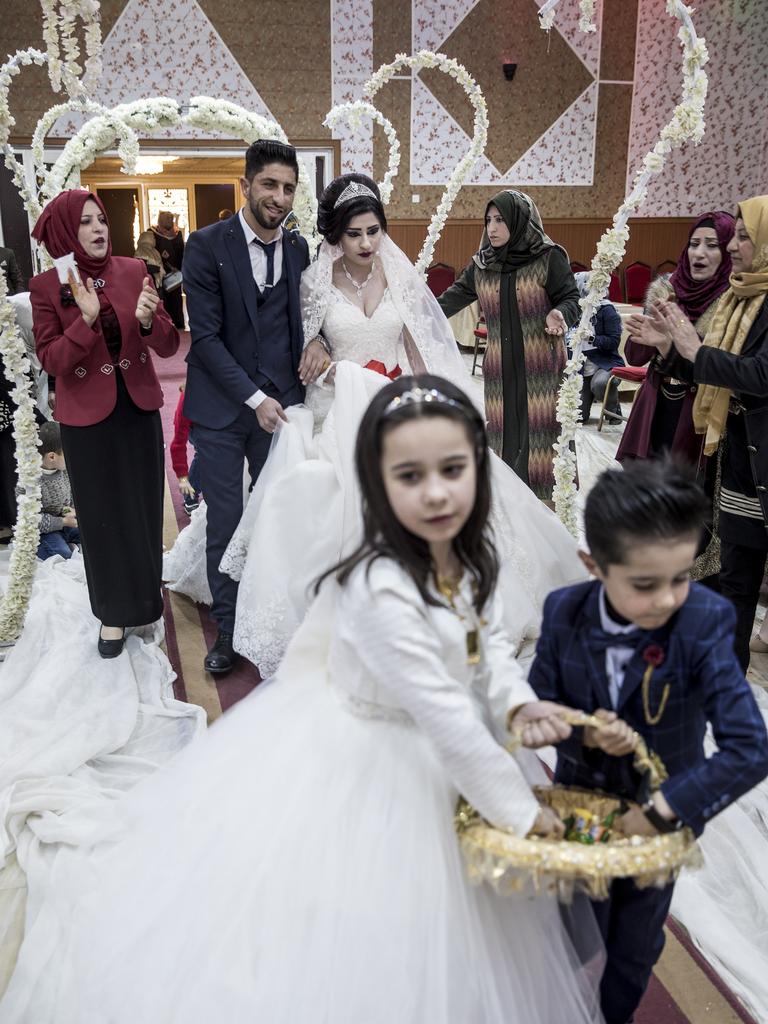
Across Mosul, little girls who were considered marriage material by the foul Islamic State regime at the age of just nine have cast off their headscarves and are playing in the ruins.
Loved-up young couples hang out together at amusement parks, while men take a break from their jobs to grab falafel sandwiches on the street. The law school is open again, training the next generation of young lawyers who will help rebuild their devastated city.
Their school was closed under Islamic State, who allowed no law but their god’s.
Nearby in the university district, Marwa Al-Jobori is meeting friends in the Book Forum, Mosul’s first mixed-gender coffee shop, a library, gallery and meeting place which opened after Islamic State was routed. It is one of only two such places in Mosul where both genders can hang out together.
She’s 26 years old, and lived all her life in Mosul including three years under Islamic State rule.
“I was 21 years old (when Islamic State came),’’ she said.
“It changed a lot, everything, for the ladies of my age, the young ladies.
“It was like they caught a butterfly and didn’t let it fly between the flowers.’’
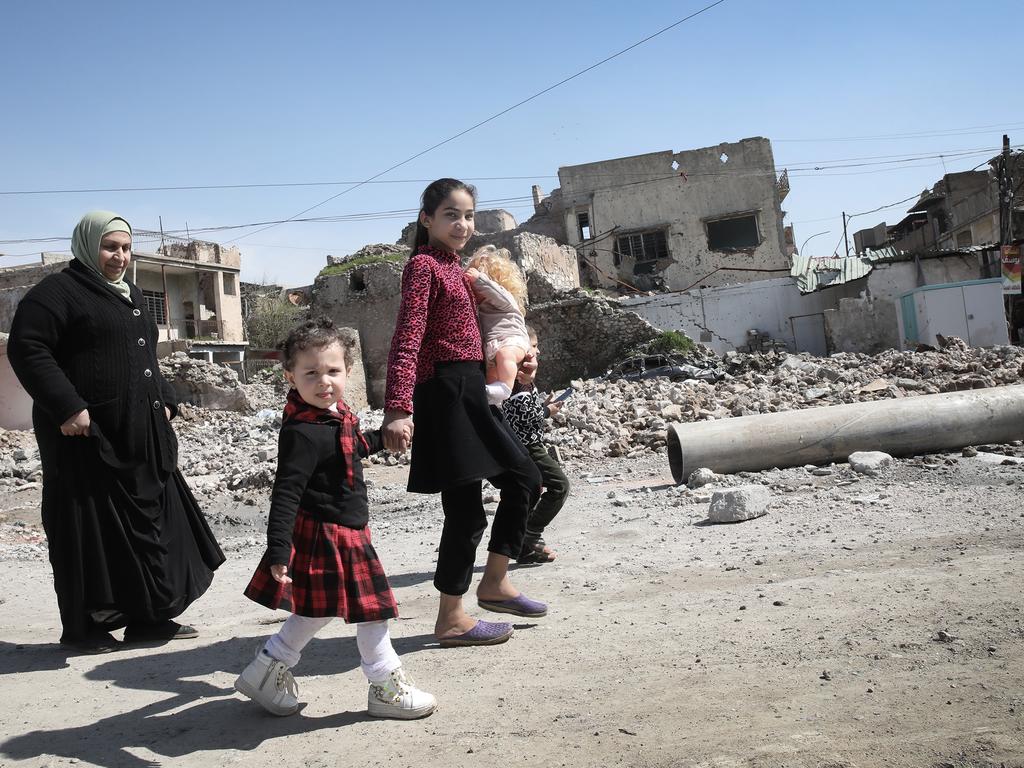
Like other women and girls who stayed through the occupation, Miss Al-Jobori adapted. She covered up under concealing garments and stayed at home to keep out of reach of Islamic State.
“I was studying at the time but I had to leave for three years. Now the city is liberated I am back at my studies,’’ she said.
“When I went out I had to cover top to toe in black and only my eyes were showing. Towards the end we even covered our eyes.
“We stayed silent. We did what we had to do to keep our fathers and brothers safe.’’ (Islamic State would punish women who broke the dress code by whipping their fathers and brothers.)
Miss Al-Jobori welcomed the liberation of Mosul by becoming an activist and citizen journalist. She’s part of a group seeking to empower women and girls, and working to give them equal opportunities with men. Part of their work is helping women and girls overcome the traumas they witnessed and experienced during Islamic State’s bloody reign.
“It’s not just the rules they had and what they forced us to wear, it was like they put us in cages,’’ she said.
“During the liberation I couldn’t wait anymore.
“I fled away and ran towards the Iraqi forces. As I ran I took off my burqa and threw it away.’’
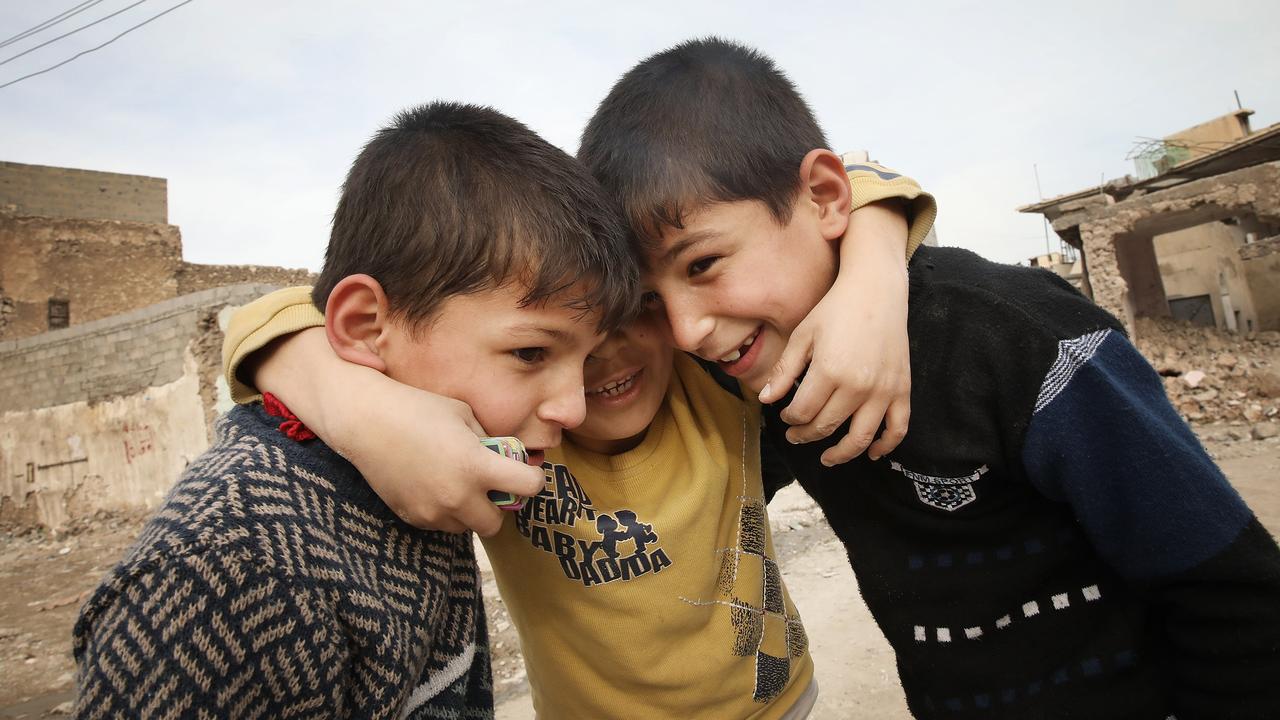
Iraq’s second-largest city, Mosul had a population of around four million people before the Islamic State invasion and has returned to around 3.9 million now.
Situated in the north of Iraq near the Syrian and Turkish borders, it had always been a conservative and restive city and became more so following the American removal of Saddam Hussein in 2003. It had also been a dangerous city before Islamic State came along, with regular car bombs, suicide bombings and assassinations.
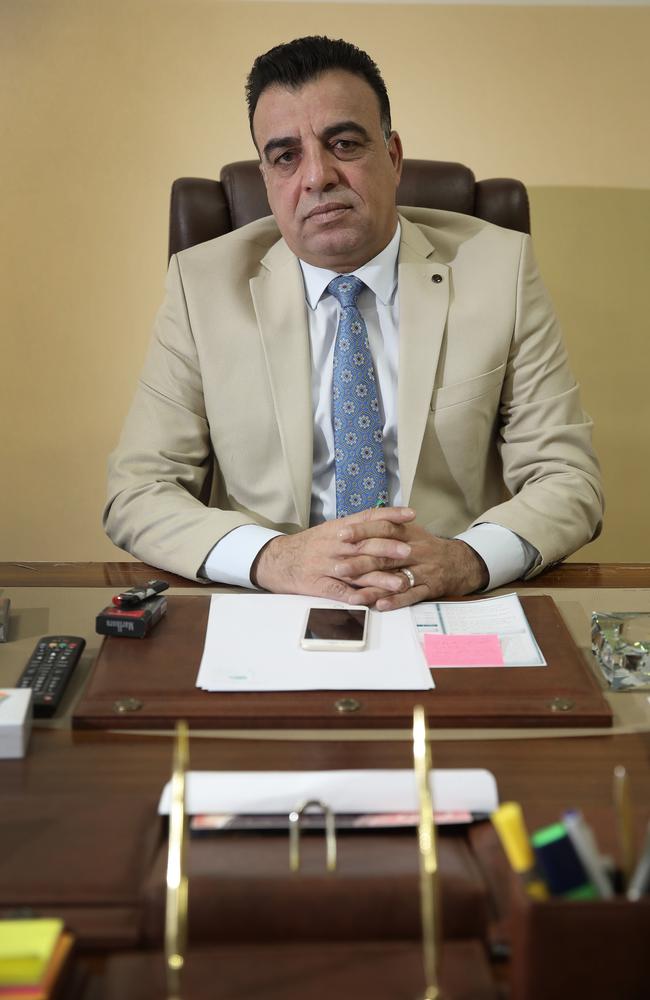
Still, the arrival of the Islamic State hordes as they swept across the border from Syria in 2014 stunned Mosul and the world.
The black-flagged jihadis were able to take the city and impose their murderous and extremist
version of Islam with ease, forcing almost two million people from their homes. At least 5000
civilians died either at the hands of Islamic State, or in the air strikes that eventually drove them out in the battle to liberate the city.
Deputy Governor of Mosul Abdulqadir Shingali said it would cost US $43 billion — the equivalent of $60 billion in Australian currency — to restore the city of Mosul. It’s a figure neither the Nineveh Governorate, nor the Iraqi federal government, have any capacity to pay.
“In 2014 when ISIS came to Mosul and Nineveh, they took over most of the towns and the offices of the government except the ones in the control of the KRG (Kurdish Regional Government) and the Peshmerga (Kurdish forces),’’ he said.
The result was the destruction of schools, hospitals, the electricity and water systems, the blowing up of all the bridges over the Tigris River and a mass exodus of around half the city’s population.
“When the internally displaced persons fled towards the camps and KRG there were around 2.5 million at the camps,’’ Mr Shingali said.
While there was no Census for the period of Islamic State control, it’s thought around two million people remained there.
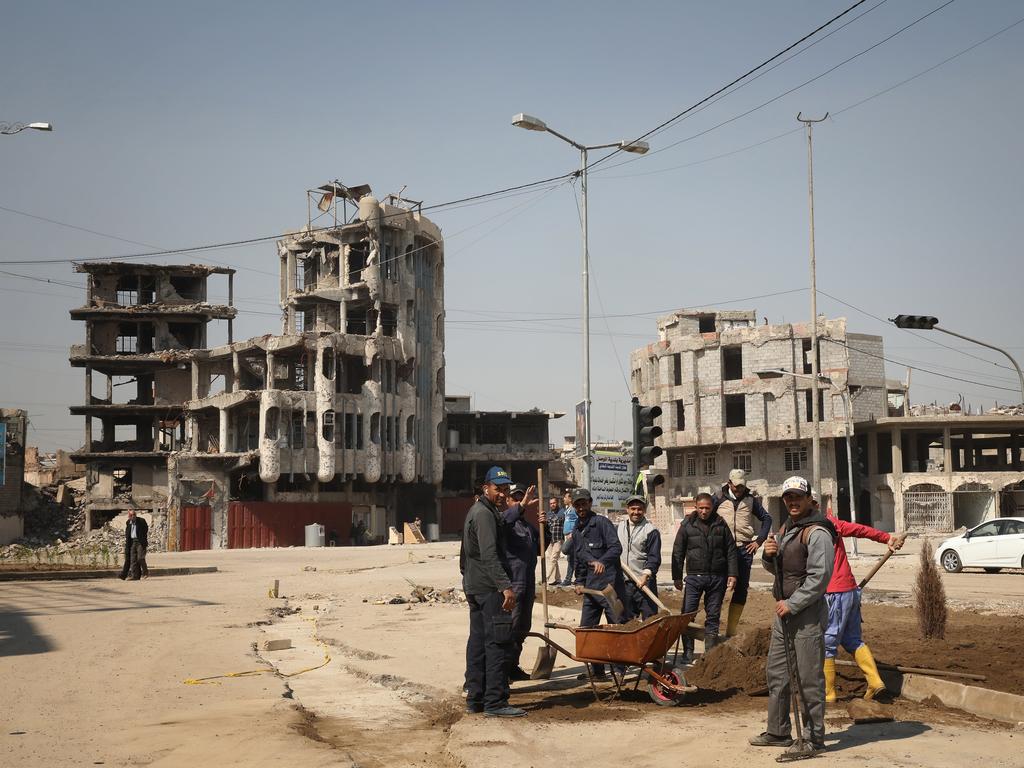
Mr Shingali said the country needed the support of the international community to repair and
rebuild Iraq’s second-largest city.
“We need international support from the friendly countries and the donors. The budget is way out of the line of the Iraqi government,’’ he said.
“The needs are way higher than what we have the capabilities of.’’
The governorate was focusing on basics to allow families to move back into the city and rebuild their lives — electricity, sanitation, clean water. But hundreds of thousands of people were still sheltering in camps, and more needed to be done, he said.
“We need to work 10 more years to be clean of ISIS.’’
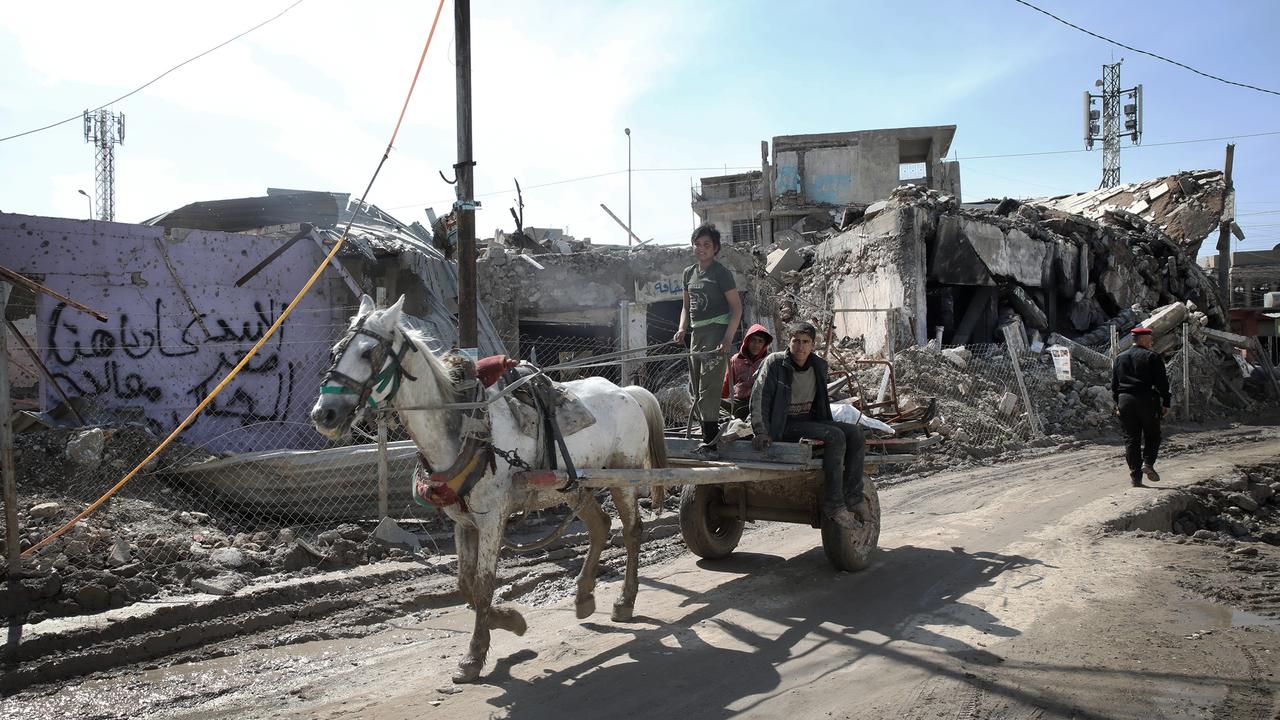
Mosul is 45 minutes’ drive west of the Iraqi Kurdistan capital of Erbil on a good day, but a car bomb in the restaurant district — the third improvised explosive device in two weeks — causes a security crackdown, and the approach becomes a three-hour, seven-checkpoint ordeal.

The northeastern approach to the city takes drivers through a large local market, where police, the National Security Service and army stand guard, and machine guns mounted on armoured vehicles are positioned on every block. A large American surveillance balloon, known as an aerostat, hovers over the city.
Through east Mosul, most buildings survived or have been rebuilt or replaced. The damage caused when the coalition used air strikes on every intersection to stop Islamic State moving around easily has been repaired. The building on the main square where Islamic State monsters filmed themselves throwing gay men to their deaths from the roof has been demolished.
Women shop on the “Fair Lady Street’’ lined with department stores, while men visit mobile phones stores, run small shops selling shoes and large stores selling furniture.
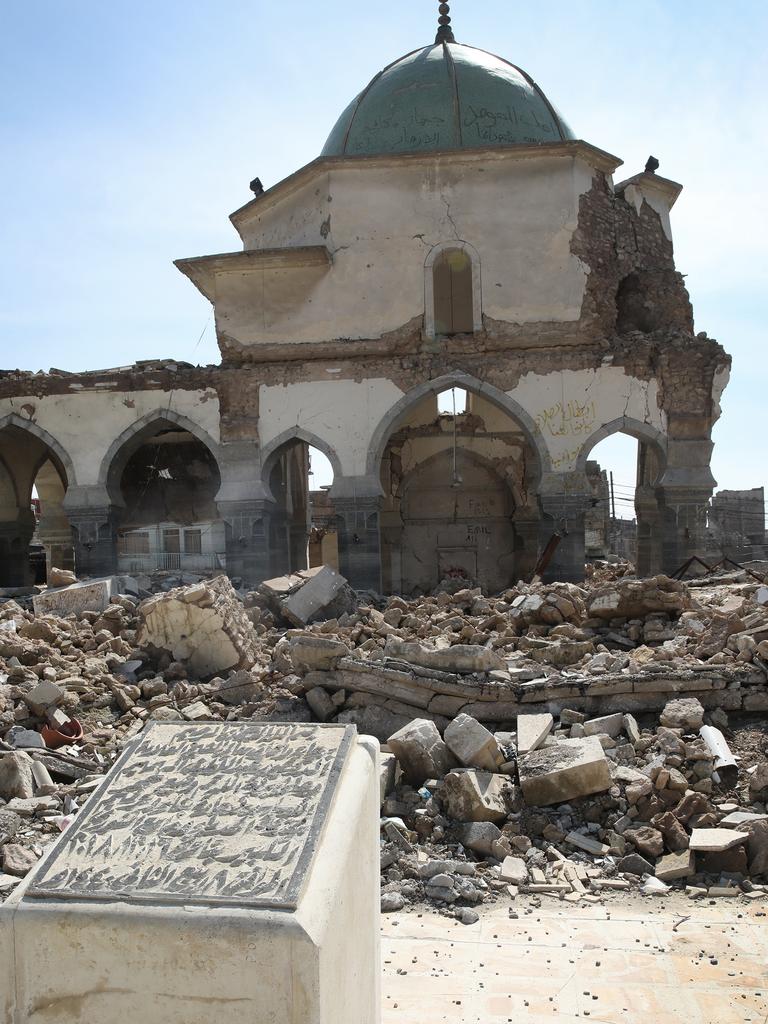
A few tiny shops and one little bar lined with fairy lights have been opened by Christian and Yazidi men, the first time alcohol has been legally sold in Mosul for almost 20 years.
But signs of the war remain.
In the Lalwahda district, the Hospital Salam is still a ruined shell, twisted and burned ambulances piled up outside. Reportedly, it was the scene of a trap, where Iraqi forces were lured in to attack Islamic State fighters. According to unconfirmed reports, 26 car bombs hit this hospital and 50 Iraq troops died in the ambush.
At the reopened University of Mosul, students throng around the gates, which don’t quite conceal several buildings inside destroyed by air strikes. Islamic State had set up bomb factories there.
But none of it comes close to the dystopian landscape that appears after crossing one of the few bridges which has been rebuilt into west Mosul.
The entire district has been obliterated. Rusty, burned cars lie to the side of the road. Buildings are just rubble, rusty steel reinforcement visible, while plastic bags and other rubbish piles up. It stinks of sewerage and mud. What Islamic State did not destroy was ruined by the international Coalition’s air strikes, a key part of the battle to liberate Mosul that raged from October 2016 to July 2017.
Yet somehow, hope grows here.
Some of the shops have new roller-doors installed. Men and small boys driving donkey carts
industriously carry away the rubbish and rubble. Here and there, cars are parked on the road outside the ruined buildings.
The Government has cleared the streets and made them passable for construction vehicles.
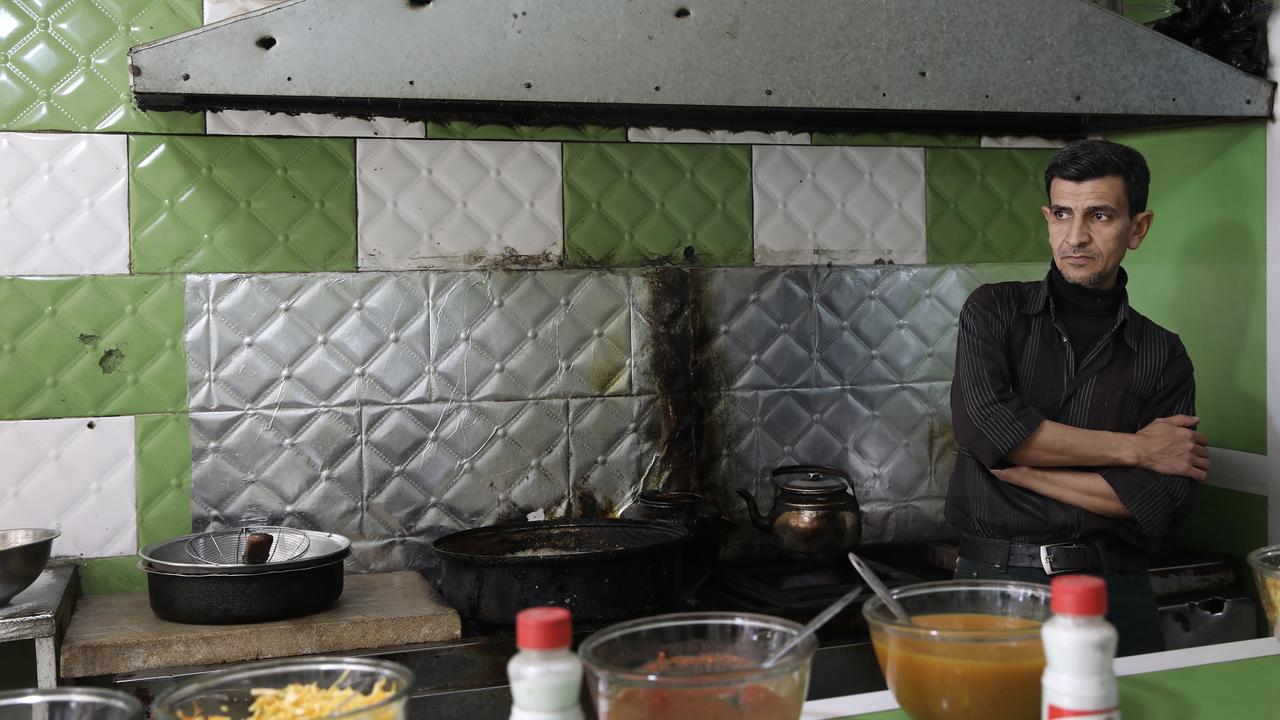
Falafel shop owner Omar Luqman, 35, is one of the first to return and re-open his little business in west Mosul.
With his brother and two employees, he repaired his damaged shop, patching up the shrapnel holes in the walls, although he could not afford to replace the extraction fan, which is riddled with bullet holes.
Mr Luqman opened the shop in 1991, selling blankets, but turned it into a restaurant in 2008.
“In 2014 when ISIS came we closed the shop because there was conflict between the forces,’’ he told News Corp.
“I took my family and went to Kurdistan. Later we reopened but business went down day to day.’’

The family found the travel between Mosul and Erbil impossible. A journey through a checkpoint could start in the morning, and not be completed until 2am the following day.
They decided to return and try to stay off the radar of Islamic State’s heavily-armed fighters, who roamed the streets day and night.
“We were frightened when we saw them. We tried to avoid them,’’ he said.
“They caused many problems. If your beard was not long enough or your clothes were not wide enough. We stayed away from them in order to be safe.’’
The family left before the final battle to defeat Islamic State began, when the air strikes destroyed the buildings that hadn’t already been booby-trapped or blown up by the jihadis.
They came back to the free city in January 2018 to start again, but times are hard.
“Business now, it’s not good,’’ Mr Luqman said.
“There are no shops and not much people except the daily workers. If it rains, then the municipal workers and daily workers don’t come.
“If we could afford it, we would go somewhere else.’’
Amjad Saleh Taha took News Corp to the bare ground where his 200-year-old house used to stand. Along with 13 other historic homes mostly owned by his family members, it was destroyed in an air strike.
“This is my house,’’ he said, pointing to an empty patch of earth and pile of rubble.
“It was one of the most beautiful antique homes. More than 200 years old.’’
A rusted pile of burnt-out cars still stands in one corner of the obliterated compound. Islamic State set them on fire in a desperate and futile bid to create a smoke screen and hide from the air strikes.

Mosul was home to the famous al-Nuri Mosque and its leaning minaret, a 900-year-old architectural gem in the heart of the Old City.
Three years after al-Baghdadi used it to declare the caliphate in a videorecorded message to the world, Islamic State blew the mosque up.
The United Arab Emirates and UNESCO, the UN’s cultural agency, have pledged US$50 million (AUS $70 million) to rebuild it, but so far, only a foundation stone has been laid.
Beyond the walls of the mosque, in an old winding backstreet, half a dozen little girls stream in and out of the courtyard of a house owned by Amira Mohammed, 64.

They’re neighbours and friends of Mrs Mohammed’s daughter Mouada, 10, and all of them lost three years of their early schooling when Islamic State came and their families kept them home, terrified for them.
All now aged nine or 10 years, they would have been forced under Islamic State to cover up in heavy clothes, and cover their heads once they turned nine, the age some of the extremists believed girls were eligible for marriage. They could have been forced to “marry’’ an Islamic State fighter.
Instead, bareheaded and wearing colourful tops and trousers, they’re finished school for the day and are running wild through the streets with the boys, climbing over piles of rubble and hurling collectable cards into the air.
Nabaa and Aya and Mayda, all 10, join the games. Mayda is expertly carrying her eight-month-old brother Adel on her hip and pinching the snot off his top lip. Little Sabah, just three, tries to keep up as they run through the cobbled streets. They don’t have much, but they do have their freedom.
“My daughter is studying in the second grade,’’ Mrs Mohammed said.
“She didn’t go to school because of ISIS. We didn’t want our girls going anywhere near them.’’

The top floor of Mrs Mohammed’s house has been blown off in an air strike. Large pieces keep falling off and she cannot afford to get them carried away, so she rolls them into her basement, where they have filled the rooms and made them uninhabitable.
Her husband is dead, she has no income, but she is determined to stay in the house where she
raised five daughters.
“It’s been my house forever, my parents and my grandparents. The house is damaged and we live in it still,’’ she said.
Her husband Ali Daoud, 77, died of a heart attack in 2014, during the Islamic State time.
She stayed, not knowing what else to do.
“We couldn’t afford to go somewhere else. If we left it someone would take it or ISIS would have controlled our house,’’ she said.
“ISIS came and asked us to leave, (but) we would stay in the basement.
“I had my daughters here (staying) in the basement.’’
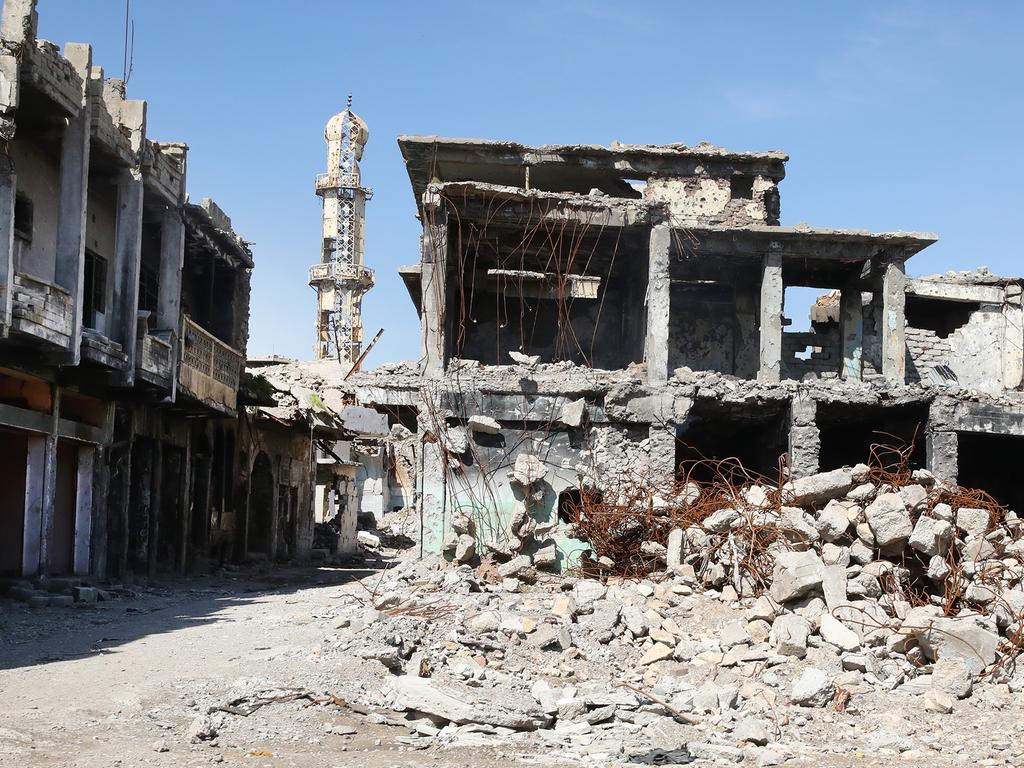
A mortar struck the home one night, the hole it made still covered by nothing but a piece of canvas.
Their neighbour was killed in the courtyard.
“He didn’t have any wife or family, only his brother who died in the bombardment,’’ Mrs
Mohammed said.
“We gave him what we had, water from the river, eating wheat.
“Some of our neighbours were downstairs in the basement. He was sleeping here in the courtyard.
“At 11.30pm we were hit. We came up and said ‘wake up, wake up’’, but he was gone. We could tell by the blood on his face. Another air strike destroyed the room upstairs.’’
Eventually, the family could take it no more, and fled in the final days of the liberation battle, on June 30, 2017, when a safe corridor was opened up.
They came back in July 2018 and remade their home.
“Before that we couldn’t come. It was too dangerous with IEDs,’’ Mrs Mohammed said.
The home was damaged and every item inside had been looted.
Mrs Mohammed said the government provided electricity to the area between 7pm and 6am, and she had a generator for other times. They used the neighbour’s toilet. She has large, painful sores on her hands and arms, caused by stress.
“We don’t have any income. People help up, and God,’’ she said.

Mosul is years away from being a fully functioning city again. Its airport is still in ruins, as are most of the bridges across the Tigris, the mighty river that divides the city in two as it makes its 2000km journey from Turkey to the Persian Gulf. Italian engineers are rebuilding the bridges.
Major-General Saad Maan Ibraheem from the Iraqi Interior Ministry told News Corp Mosul would welcome foreign experts and companies to help with the reconstruction.
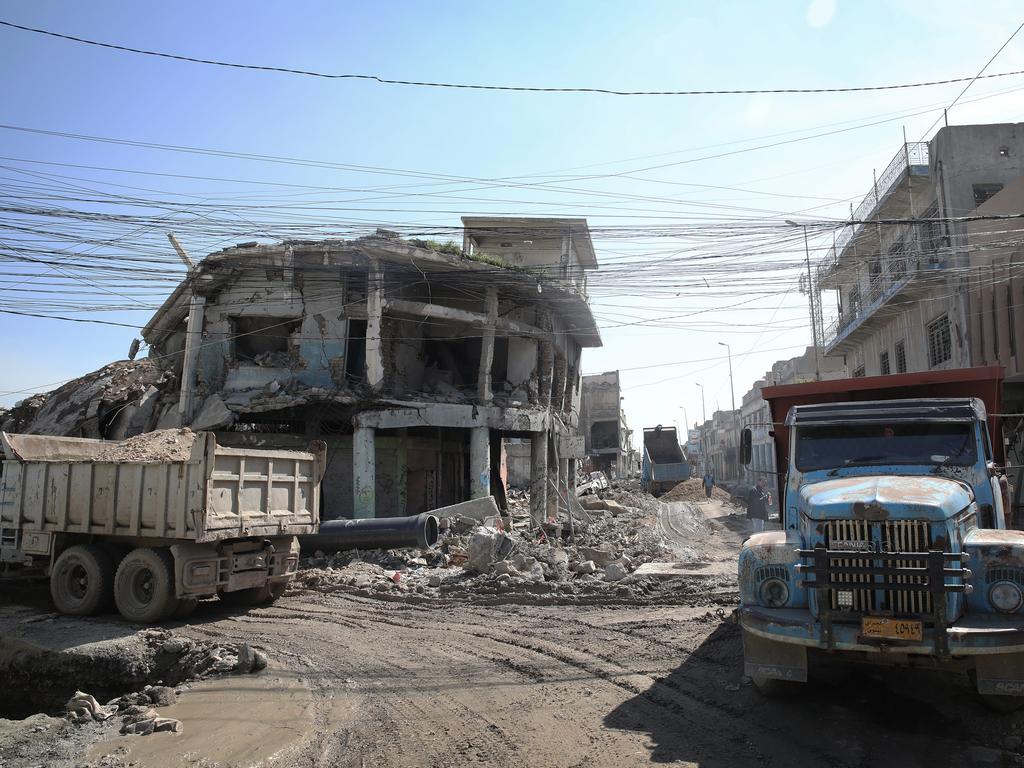
“We are working to ensure there is a suitable environment for the companies to come and rebuild,’’ he said.
“Mosul is now ready for any foreign company or county to come and rebuild. The Old City,
particularly around west Mosul. It is our dream. We will achieve it.’’
Sociologist and security adviser Dr Rassool Mutlak, from Baghdad, saw positive signs on a visit to Mosul in February.
“I saw so many pregnant women, women carrying newborns,’’ he said.
“And also plenty of nightclubs, alcohol, which is a sign of no ISIS.
“Most people who can afford it are living in the east side. There is a market area, shopping, people staying out late.
“There are plenty of students.’’
Dr Mutlak said the Nineveh head bureau had told him the birthrate had risen 12 per cent this year, compared to 2012.
“In five days and four nights we saw 45 weddings,’’ he said.
“People are relaxed. They want to make a marriage and make a family.’’



Add your comment to this story
To join the conversation, please log in. Don't have an account? Register
Join the conversation, you are commenting as Logout
Here’s what you can expect with tomorrow’s Parramatta weather
As spring moves into summer what can locals expect tomorrow? We have the latest word from the Weather Bureau.
Here’s what you can expect with tomorrow’s Parramatta weather
As spring moves into summer what can locals expect tomorrow? We have the latest word from the Weather Bureau.